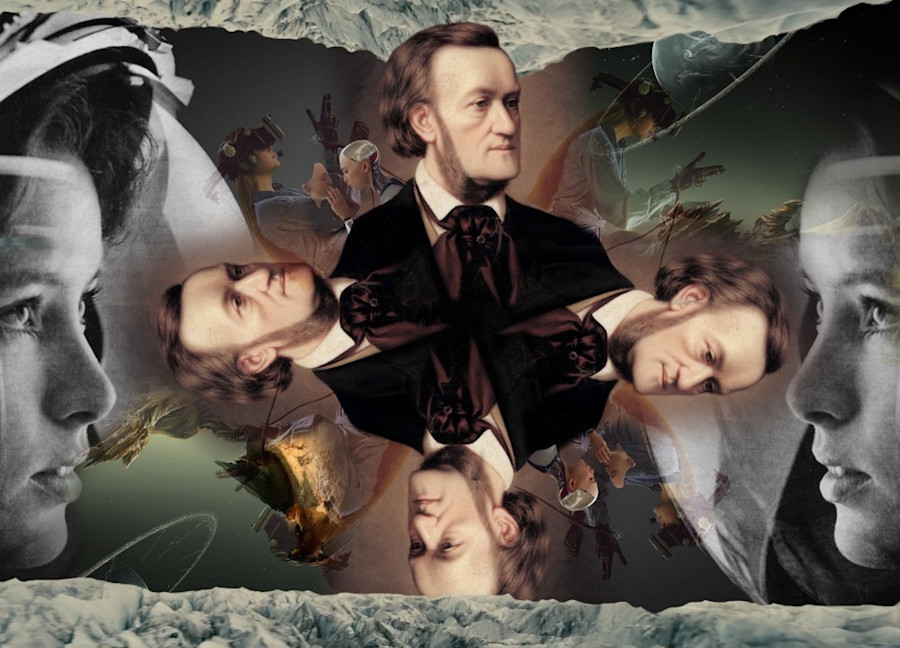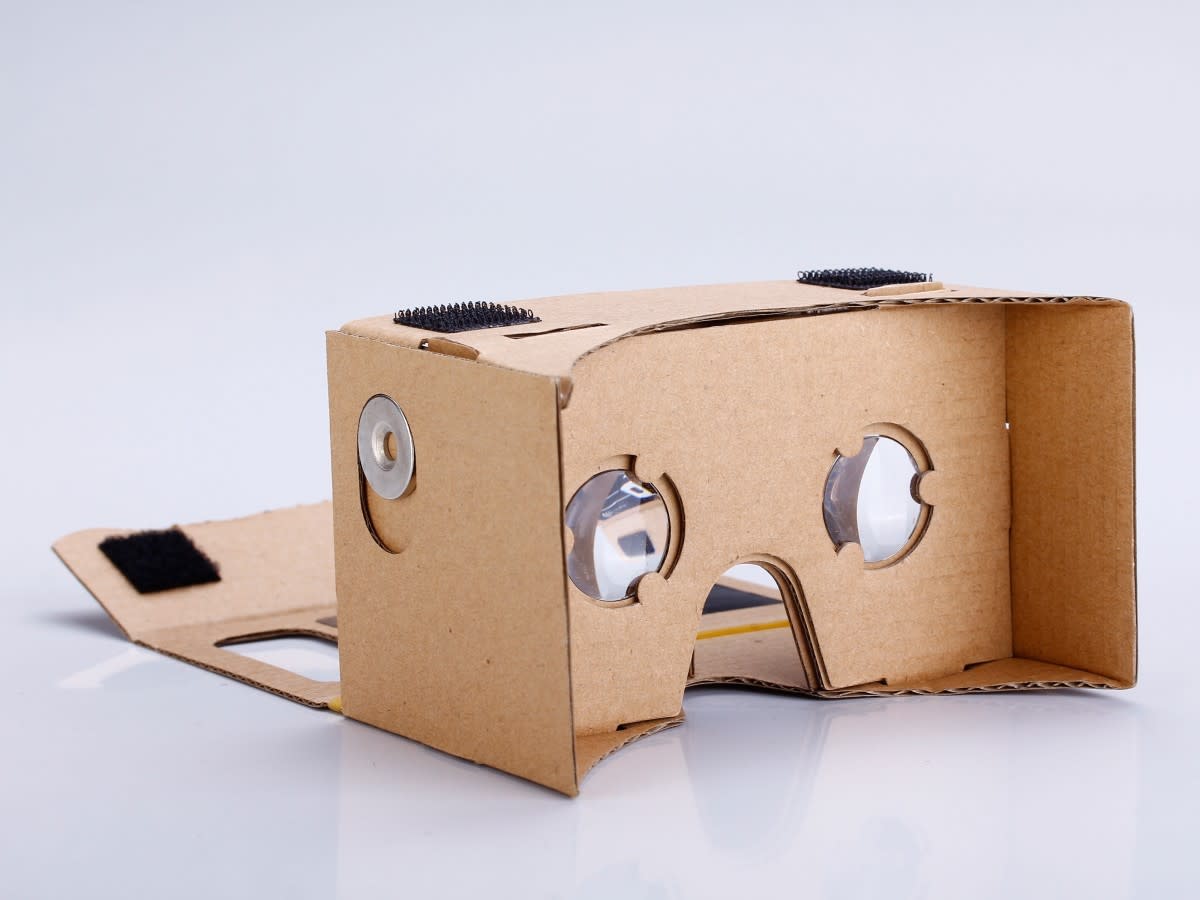Future State: The Next Billion

Jon Wiley, Director of Immersive Design at Google explains why we should look to 19th C. opera and science fiction to design for the new digital generation.
Ahead of 2016’s Future State discussions with the likes of Google, Facebook, Uber, Atlassian, ACE Hotels, Commune Design, Teague and more, we speak to three of these panellists about how exactly you tackle designing the future.
“Most of the world have barely thought about virtual reality. It’s seen as a failed Nineties technology: giant CRT monitors strapped to your head.” Jon Wiley, Director of Immersive Design at Google, is talking about the challenges he faces leading the company’s Cardboard program. “VR [now] has the baggage of old VR. there’s a very strong novelty factor.” He raises one hand into the air, to show the promise of new technology, then places his other hand much lower: “Any new technology has skepticism.” Where people can’t see the immediate application of new tech, he suggests, they usually can’t see the value. The space between skepticism and enthusiasm Wiley calls “the excitement gap.”
“The skills we use as designers don’t change. Tools and mediums and the scale of problems do. If we stick to our guns, we’ll weather it.”
Jon Wiley
It’s the inherent challenge of new concepts, and one that Wiley cautions designers against trying to solve too quickly. For example, when he was evolving Google’s search function: “We led with skeuomorphism when we went from web to mobile - we’ve moved away from that, the path is flat design, or whatever we choose. The same thing is going to happen with VR - we’ll just take everything we know and throw it into a completely new medium. Then we hope we choose the right metrics to understand what works and go from there.” This might sound like a lot of overhead, but its necessary overhead if you want to see success in design. “As a designer I want to jump past all that - but no, sorry, you have to go through seven years of making sure users are comfortable and ok with it.” You have to help them, is the lesson. No matter how much you want to fast-track what you see as the real change, something that alienates the user will take years to come back from.
Wiley’s approach to design isn’t necessarily academic though. While he can speak of the value of data-led decision making - “I can give you scientific evidence of how moving something three pixels to the right made people so much happier” - his ambition and advice to designers is, in a literal sense, fantastic. “We must all, as designers, become science fiction writers.”
He explains this in detail, citing an imminent challenge to designers: soon, emerging technology will become so complex our rate of progress is hampered by it. This is not something you can solve by focusing in further on existing detail. Instead, you must imagine a future state, a better state, and design towards it. On the way, if you’re right, you’ll find the evidence that supports the design. “Could anyone have picked in 2006 that people owning smartphones would turn cars into software? That the result [of ubiquitous smartphones] would be Uber?”
“We must all, as designers, become science fiction writers.”
Jon Wiley

So, are we at the precipice of something profound? It’s a throwaway comment nowadays, but a common one: how great is living in the future? Wiley’s take is different: “VR devices today are like the Gordon Gecko phones. Giant cables and batteries. These devices are the worst they will ever be.“ Well, yeah. Wow. That’s actually true.
He references the video call we’re making. “Technology is so still in the dark ages that it can’t even handle an international call compared with normal human interaction.” He’s referring to the nuances we get from today body language, tone, just proximity to each other. And that’s the crux of his challenge with Cardboard: “I’m looking to how VR can help solve or make up for the lack in technology.”
It’s a challenge he’s deliberately chosen as a logical progression from his work on search. “One of the reasons I joined Google cardboard was I saw something reminiscent of the Google homepage.” It’s not something you’d typically consider when thinking of great design, but the Google homepage is a triumph when you quickly think about it. Behind the simple search bar is an enormous amount of processing and millions of hours of refinement. Wiley has the same fundamental aspiration for Cardboard - simply, that people try it and “it’s way better than their expectations.”
Beyond testing and learning, there’s a way he thinks you can help exceed expectations. He asks me if I’ve heard of gesamtkunstwerk - a total or ideal work of art - and immediately apologises for it: “I can just see how pretentious it is, a designer using that word.” Of course, it’s not at all; it’s incredibly and characteristically precise. The composer Richard Wagner referenced the concept of gesamtkunstwerk in his essays in the mid-19th century: that, very basically, all the individual components of an experience should be subordinated to a common purpose. An opera isn’t just an opera, it is also its drama, its pre- and post-theatre experience, its lighting and setting and audience.
He advises designers to take a similar approach, to always design with a view of context. “We have our own aspirations of technology, and they tend to be very selfish aspirations.” We must take a wider view of what is possible and what is meaningful to people. He describes returning to college textbooks: “Design isn’t going to be locked into a screen. It’s going to be environmental and architectural.”
“We have our own aspirations of technology, and they tend to be very selfish aspirations... design isn't going to be locked into a screen. It's going to be environmental and architectural.”
Jon Wiley
And so two hundred year old cultural concepts are the natural place to start to plan the future state. “By 2020, four or five billion [people] will have computers in their pockets.” Smartphones, we’re discussing here. “Machine learnings and AI will be disruptive and transformative technologies everywhere, not just in Silicon Valley. Five billion smartphones is going to tremendously reduce the cost of computation. Interfaces are going to start melding into our world.” So, yep, when that happens, we really do need to take a kind of panoptic view.
These are concepts that are as overwhelming as they are exciting. And it puts a hell of a lot of responsibility on designers to make the world better. Fortunately, Wiley thinks we’re equipped. “The skills we use as designers don’t change. Tools and mediums and the scale of problems do. If we stick to our guns, we’ll weather it.”